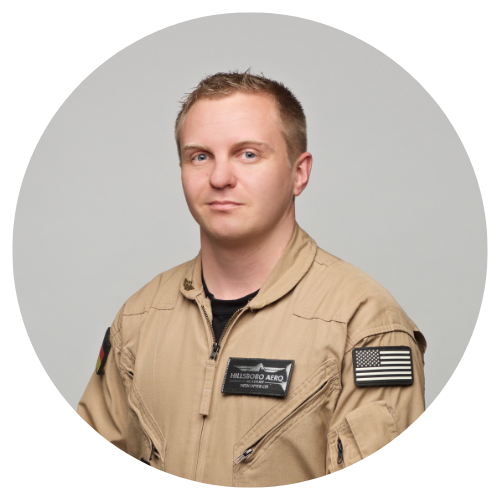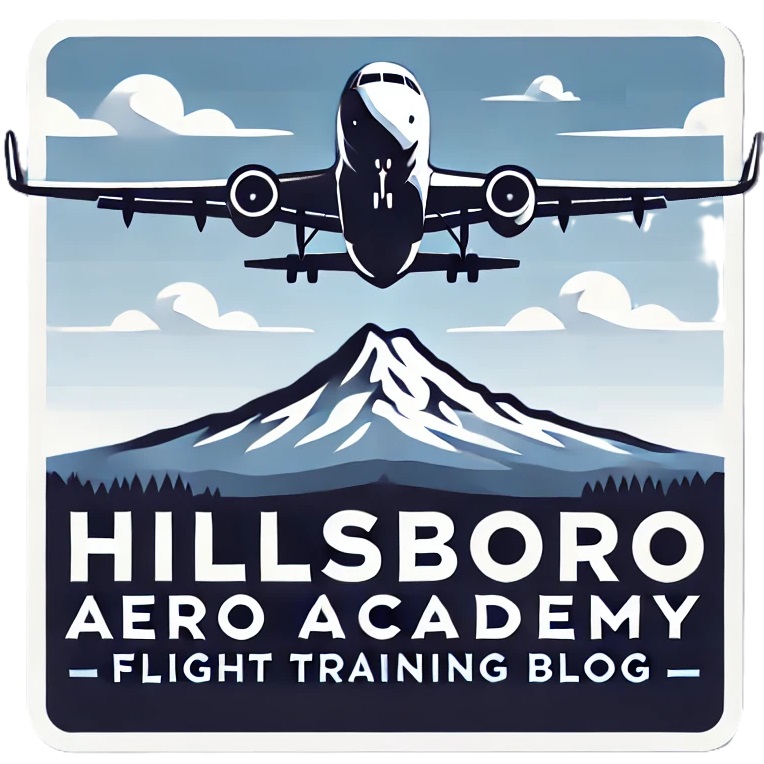Take-off is Our New Newsletter for Aspiring Pilots
The journey to becoming a pilot is complex but full of exciting opportunities. At Hillsboro Aero Academy, we guide you through every step of this adventure. From your first flight hours to earning your commercial pilot license and flight instructor certificate, we are with you every step of the way!
1. FAA Private Pilot License (PPL)
Your training starts with the FAA Private Pilot License (PPL). This foundational course equips you with the essential skills to confidently operate an aircraft and perform your first solo flights. Typically completed in around 3 months, this phase builds the groundwork for your entire career. You will learn to fly, handle your aircraft in various situations, and prepare for the journey ahead.
2. FAA Instrument Rating (IFR) & EASA Theory
Parallel to your Instrument Rating (IFR) training—which qualifies you to fly in poor weather conditions—you’ll begin your EASA theory. The EASA curriculum includes a structured self-study plan and online courses designed to provide you with the knowledge required for flying in Europe. This part of your training encompasses 13 written EASA exams that you’ll complete over 9-12 months in our certified EASA Testing Center. This phase is intensive, as you advance both your practical FAA and theoretical EASA skills simultaneously.
3. FAA Commercial Pilot License (CPL) – Training on the PA44 Seminole
The next milestone is obtaining your FAA Commercial Pilot License (CPL). In this phase, your flight complexity increases significantly. You’ll be advancing your skills by flying different aircraft, including the PA44 Seminole, a multi-engine plane with unique flight characteristics. Transitioning to a multi-engine aircraft presents a significant challenge, as you’ll learn to manage both engines in balance, execute complex maneuvers, and navigate safely under varying conditions. This experience enhances your precision and overall competence as a pilot.
4. FAA Certified Flight Instructor (CFI) & Certified Flight Instructor Instrument (CFII)
Once you’ve earned your CPL, the next step is to become a Certified Flight Instructor (CFI) and Certified Flight Instructor Instrument (CFII). During this phase, you’re still in training, but you’ll learn how to teach and mentor future pilots while refining your own skills. This section is crucial because it not only builds your technical expertise but also develops your instructional and leadership abilities.
5. FAA Multi-Engine Instructor (MEI) & EASA CPL
Following your CFI/CFII training, you’ll move on to your Multi-Engine Instructor (MEI) training, where you’ll learn to instruct students on flying multi-engine aircraft. Simultaneously, you’ll work toward earning your EASA CPL. This is an intensive stage as you acquire two of the most demanding licenses, qualifying you to fly and teach on multi-engine planes in both the USA and Europe.
6. EASA Instrument Rating (IFR)
The final step in your training is acquiring your EASA Instrument Rating (IFR). EASA regulations require you to gain additional IFR experience before obtaining this rating. The great part is that during your time as a CFII, you’ll accumulate valuable IFR experience, making it easier to convert your license later in Europe. This training ensures you are fully prepared to work as a professional pilot anywhere in the world.
The Path to Becoming a Professional Pilot
With each step, you’ll grow as a pilot, accumulating valuable experience and honing your skills. From your first flight hour to your final IFR rating, this training program prepares you for all the challenges that lie ahead.
Your journey as a pilot starts now!
FAQs
We’ve created an extensive list of frequently asked questions about pilot training on our website. Make sure to check it out! https://en.flyhaa.de/faq
Webinars And Events
We regularly hold webinars and live events all over Europe, where we inform about our school and the training we offer. You can sign up here for our next events: https://en.flyhaa.de/webinar/

